-
Posts
2,210 -
Joined
-
Last visited
Content Type
Forums
Detector Prospector Home
Detector Database
Downloads
Posts posted by Gerry in Idaho
-
-
7 hours ago, Glenn in CO said:
Definitely agree on that strategy, watch out for those seller fees if you go the auction route.
Any serious gold specimen collector would be looking to add that specimen to their collection.
In the mean time just sit back and enjoy it and the memories of finding it!👍
From your experience is there a better auction site you like and or used with no issues. Also just as important, was there any you though was a waist of time/effort.
This will be the 1st time we have sold through such assistance, but was told on high end gold art, this usually brings the top dollar?
-
9 hours ago, Glenn in CO said:
What it is valued as a gold specimen, sure out weighs (no pun attended) what the specimen weighs in at.
That specimen is beauty for sure!
He's has quite a few $10K offers a couple in $15K range and one bumped it up to $20K. I still feel his best bet is to wait until Covid is over and have it at a couple bigger shows to get some publicity. Then head for the Auction with a Minimum of $25K.
-
If I found one like that, I'd not call it a Sun Baker, but would call it a unique "Block Buster Find" as you have the rock it's still stuck in, as is. Please leave it like it is, as this adds character, mystery and potential value to a collector.
Thanks for taking the time to catch it as discovered with your pics and being able to leave it as is.
Sometimes a find is best left the way you 1st realized it.
Thanks for sharing an extra ordinary find.
-
So when the excitement was over and we finally put it on the scale, it had us a little frustrated. As such a bizarre and exquisite gold specimen, our lack of discovering this mythical style we had no experience before. Now we learn, as well as a bill and coin of the actual weights.
How many times have you dug a nice piece of gold to only drop on the scale and be baffled.
Yes we were, but still a prize among gold collectors. Watch the video and get a little lesson on gold and $100 bill.
-
To add to my post above so someone doesn't decide to fire me.
Those little contests do generate replies and buzz. But Minelab is missing their age group that is purchasing the GPX-6000. How many teens/20's/30ish year old folks are dropping $6000 on a detector. Yes those are the majority of folks playing the contest games.
They need to understand price of a detector has a lot to do with an individuals income, which usually correlates to age.
I'm on Facebook and the majority of folks who actually purchase a detector from me on their is spending less than $500. Sure I get a good % of them that I can get to step up to an Equinox, but that is still less than $1000.
As I stated, thank god Minelab has fantastic engineering and detectors.
-
Heck, As a dealer and one who is taking Pre Orders, I am almost embarrassed to post all the new info coming up (with their short 30 second clips) of hardly nothing. This is the most embarrassed I have ever been in my 20+ yrs of selling a Minelab detector with their approach. Thank god they have fabulous technology in their detectors. Hopefully they hire a marketing person to get it right next time.
-
23 hours ago, NV-OR-ID-CAL-AU said:
After reading several posts on this forum I have narrowed my research of VLF metal detectors to the Equinox 800, Gold Monster, X-tera 705 Gold Pack, Nokta/Makro Gold Kruzer or AU Gold Finder, White's 24K or MXT, or a second back-up Gold Bug 2. I am really looking for the machine that can handle the hottest ground and has the sharpest sound on small and deep gold. Although no detector is a do it all machine I'm hoping the one that can handle the hot ground the best should be able to excel with better iron/disc. and target separation regardless of it being a multi-purpose detector or gold only detector, my assumption only. Does the frequency of detectors change their ability to handle hot ground like Australia. Has anyone tried these detectors in highly minenalized ground with any good results?
For Pulse Induction I'm narrowing my research to the GPX 6000 and/or GPZ 7000 both non disc. units for a great option for Idaho, eastern Oregon, and Nevada were there is less lead and iron trash present. For these Siskiyou's trash sites I'm looking at the GP/GPX series with iron/disc. Garrett ATX, Fisher Impulse Gold (has anyone been able to separate out lead and iron trash with the Fisher limited AQ Impulse version and still find small and deep gold)? Has anyone got a good grasp on these machines being affective in iron and lead infested areas?
Thank You for your time.
Ron
Ron, Welcome to DP. I have owned and used (with Success) all the VLF units you mentioned. I won't go into detail as I feel your narrowed down list to EIGHT different VLF detectors is not very narrowed down and it would take me forever to type it all up. So I'll say this. I have 9 Field Staff Experts in the NW States and we have found gold with all the units you mentioned. BUT!!! We only own a couple of those machines now and they can get anything from me at a discount (good reason to be on my team). These guys are top notch gold hunters and they earned their way onto the team. All 10 of us use, own and find gold with an EQ-800. All 10 of us used to own GB-2's and GM-1000's, but none of us do now. Most of us used MXT's and X-705's back in the day, but don't own them any more. Only a few of us owned the Makro Gold Racer and 24K, both good for the price. Here is your problem. None of them are PI detectors and or can they minimize the bad soils like a PI. We do feel the EQ-800 serves best for Identification in trash, Fine Tune Adjustment Capability and overall depth on a variety of gold types and sizes. We also realize a VLF has it's strong and weak points.
How about the big dog PI's and ZVT of the 7000-it's not a PI. 9 of us own a GPZ-7000, but some of us also own SDC-2300's and GPX-5000's, as they each shine in their own ways in certain situations.
I sure wish there was a simple answer to your questions, but in reality, those who detect for gold in so many areas and types of soils, terrains and trash sites really do need a variety of detectors.
If I could only have 1 VLF it would be the EQ-800.
If I could only have 1 big detector, it would be a GPZ-7000 today and probably a GPX-6000 in a couple months, as I really want the new lighter weight and better ergonomics.
As for Iron Discrimination on a GPX-5000, most of the guys who try it don't know what their doing so they quit. But I assure you, if the time is taken, the DISC on a GPX-5000 and a DD coil is a lifesaver. Heck, most of the Civil War Relic hunters Back East are now learning to use a GPX with Disc. Can you miss gold in DISC mode, most certainly just as easy as you can miss gold with a PI that a VLF sees and you can miss gold a VLF won't respond, but if you crushed the ore, there could be gold in it. You need to play the odds in your favor and have the best tool for the site you plan on detecting.
If you are in known gold producing area, the next best thing is knowing how to operate the detector properly and know what to listen for.
When you get ready to purchase, call me at www.gerrysdetectors.com and we'll discuss more details, as I am slow at typing.
Or you can keep a smile on my face and purchase 1 of each.
-
20 hours ago, YubaJ said:
Hi Gerry,
A really informative thread! I'll have to travel to tailings piles, but do know of many out of the way hand-dug ones in California. I wonder if you could share some of the Nox settings you use in the old dredge tailings, the ones that sounded on the incredible gold-laced cobbles you found.
Thanks!----From a former Rye Patch student--great training!
All my customer who purchase the NOX 800 from me get a bunch of knowledge and settings. Did I forget to email you all the info? If so, email me direct from my website. www.gerrysdetectors.com
-
Rob, I can easily see from your post and only finding 2 nuggets in 4 years at a known gold producing site, you need some hands on Field Training from an Expert who knows the SDC-2300. Education and Quality Field Training is not cheap, but well worth it as you'll have it for the rest of your detecting career.
Here is what most people do and a big mistake. They purchase a higher dollar detector thinking that is the solution to them being successful. No Sir, I don't feel so. Yes it will help, but 2 nuggets in 4 yrs with a top performing detector proves my point, you don't know what your doing with it.
My 1st time to Gold Basin, I showed up on a bus with 30 other Minelab dealers. I did not even take a detector, then handed me one and after 4 hours, I had 4 nuggets. I'd never been there before. Guess how many nuggets were found by the 30 Minelab dealers? A total of 5 and I found 4 of the 5.
Why is that someone can hand me a gold detector in an area I have never detected before and I find gold? I know gold detectors, I train on gold detectors, I sleep with gold detectors.
Here's what's so funny about this story. I had 20+ yrs of detecting experience when I purchased my 1st gold detector. 3 detectors and 2 yrs later I still had not found any gold, but yet I was a 20 yrs detector veteran (who was dam good at coin/relic/jewelry hunting).
I finally paid $100 for a half day seminar for a Nugget Detecting Expert. The following weekend I went out and found 14 nuggets in 13 hours of hunting.
That's when I learned so many people who own gold detectors are actually missing and walking over more than what they are finding. If you are in a know gold producing area, it's there, but you need to learn how to find it.
Your options are to keep trying trying, more trips, wear tear, flat tires, wasted gas and frustration for who knows how long??? Or pay an expert to plug in with you and your detector and teach you the ropes.
Good luck in your pursuit and if you want to speed up your knowledge/success, I can provide one of my Field Staff who is in AZ, a day in the field with you. Again, it's not cheap, but sure is fun when you can find gold most days you go out and realizing gold is $1800 to $2000 an ounce. He's in AZ right now and if interested call me. www.gerrysdetectors.com
-
On 2/19/2021 at 3:17 PM, Dances With Doves said:
Do they move around those piles so you can find more ?Did you do good with the X-terra on those tailings piles ?Those (Nox and Xterra) machines sound similar so those who hunted with the x- terra were able to adjust to that machine easily.The multi Iq stable id gives the Nox the big advantage over the X-terra.If you forgot the Nox but could choose any other vlf machine what would be your choice for this type of hunting ?Also is the Vanquish able to handle those piles for people who have that machine or those who have limited funds to spend on a machine.
Some areas the tailing do get pushed around and can be detected again. The same thing happens in NV and AZ in areas without tailing, as they are clearing away the layer of ground already detected and then hunting the new layer, then push..detect, then push detect.
Yes I have found plenty of gold with an X-Terra 70 and the newer model 705 (be sure to use the 18.75 kHz coils).
If I forgot my NOX-800 and someone said what is the next best detector for the same tailing piles. I'd use the Gold Monster 1000 (newer version), X-705, White's 24K, White's MXT, Garrett AT Gold, and lastly the Gold Bug-2.
The Vanquish has no Prospecting Mode, No adjustable Ground Balance. Heck I might even use an Equinox 600 before I used a Vanquish. Not beating on the Vanquish, but I have other detectors I know can do the task.
Can any detector find a big nugget? Most certainly and we have found them with Coin Machines just to prove a point and win a steak dinner. But, it would not be a detector I would sell or recommend to those that want to chase gold..
-
I've known Minelab/Codan was a strong player in the metal detecting industry and I thought about purchasing some shares after I went to the last Worldwide Conference held in Italy. It was at $3.20 AUD and today it is at $15AUD. Guess I missed the boat again. Early on when I was selling Minelab detectors the shares were less than $1 AUD.
Guess I should take some of my profits and roll it into their stock. I think with the GPX-6000 just coming out, there is still room to make a few bucks.
Does anyone here on DP have any CDA stock and does it pay dividends?
Thanks for sharing Steve.
-
Heck I was all excited until I got to their page. Spent the better part of an hour to get through the 1st paragraph and still confused. Their spelling sucks...😆
Guess I'll stick with the finished product when it arrives. Interesting to see someone would take one apart already. Maybe I could trade some good Vodka for their unit?😉
Either way, it is nice to know some on here DP are worth listening to.
-
On 2/18/2021 at 1:56 PM, Norvic said:
Elaborate on that one please Gerry, I feel it is because of the ground you work and your technique in working that ground, for me that statement would apply in the early VLF days before the PIs because the gold was just laying around but today the Z it`s depth on sub grammers and ozers but that`s in my backyard.
Norvic, I posted a new thread, as I felt there was education for others who may have missed this. If it did not answer your question let me know.
-
5 minutes ago, Jonathan Porter said:
The 6000 would definitely be part of my arsenal of equipment just based on the material that has been officially released, but then double down on that because of what I know.💲🥰😇
JP
Very well said JP and I like that you mentioned "in my ground" as the soils across the world differ and many of the older detectors and technologies were better suited for 1 or the other. It now seems a select few newer detectors will be able to do a pretty good job in most areas, soils and conditions.
Thanks for taking the time to chime in and give us more food for thought. - knowledge
I'm so excited for the GPX-6000 because of this you said:
"The 6000 would definitely be part of my arsenal of equipment just based on the material that has been officially released, but then double down on that because of what I know.💲🥰😇"
-
Norvic asked why I was so proud of a VLF when I own and have posted much success with the other higher end detectors. It was my post on rating the higher end Minelabs....so here goes.
There are many factors to my craze and style of detecting, but my finds are the facts and not many people can compare, unless they too use the tools (detector) and hunt the style I do. I consider myself a gold hawg or gold pig. I chase it all in terrains flat or tall.
Terrain - I live in the Northwestern state of Idaho and much of my detecting in the surround state of ID., is Oregon, Nevada and occasional Montana. For the most part, OR, MT and ID are pretty much the same with steep terrain mountainous rough country. A day of electronic prosecting and hiking in such states, is much harder on the body for a guy my age, heck it’s harder for anyone. Going to Arizona, Rye Patch and other Northern Nevada high desert areas is a treat for my body in more ways than one. Maybe that is why so many people detect there? It’s easy to drive and get to without walking…boy are most of us lazy? YES, including me at times, but not in my home state (backyard where I play). The ID, OR, MT mountains have steep ravines/canyons and the water is at the lowest point. Here is the many miles of hand placer workings, dredge tailing and hardrock mining ore dump piles. The gold I am chasing is the stuff the old timers missed.
Pic below - This huge ore dump pile produced a few thousand dollars in Specimens. This is the not so steep side and we had to tie off with ropes on the other side. Half the targets would roll down the hill and need to be found during a break when we were at the bottom. The PI's can't see this time of gold.
Trash - Trash is my treasure in a way.. as I know the site has not been hunted as hard. Trash is what most detectorists hate, and I too get that way on occasion, but I know if I'm patient, I'll eventually be rewarded. A big factor I run into is 100 to 150 yr old man made trash from the early prospectors. They left much of it on the hill, in the placer digs and tailing piles. Many of the small mining camps were right on or near their diggings and they just tossed the old food cans, tobacco/coffee tins and worn out leather boots with hundreds of nails and broken, picks/ax heads shovels aside.
Pic below- In old tailing piles a lighter, faster, better ID detector is best. He who digs the most non ferrous targets in a day, get to smile all the way home.
Pic below- is the 1 pound specimen after cleanup.
Tools – Know your detector, its limitations, strong and weak points. Bigger deeper detector is great in flat terrain and areas with limited trash. Raw depth and power is amazing to have, when the target you dig a foot or so deep is not a sardine can. How about a shovel head at 2 feet or more? Think about it and what you do when digging 5 or 6 of those an hour with your big deep penetrating detector. What does your body have left in the tank? My lighter VLF is easier to swing in rough terrain, has better Iron and Target ID, is not as deep or powerful in trashy sites. It saves me time from digging unknown iron targets, it saves me energy from digging deep holes, it saves me energy from having to pack around a bigger bulky detector. The proper detector for the site is a must and in many cases my lighter, faster, better target Identification, sub $1000 investment is the right tool.
Pic below - This golden oreo was recovered in old hand placer workings with my VLF.
Having what I consider the best identification VLF gold detector on the market saves me time.
Pic below - It was recovered at 16" with Minelab EQ-15" coil. Yes I'll be going back over this area with the new CoilTek NOX 15" round as it is even deeper.
Gold Knowledge- This is confusing to so many people as they think gold is gold. Yes I too used to think the same way. Luckily I hunt a variety of gold producing locations and sites I like to detect and learn from. My many years of comparing/testing detectors at such sites has given my staff and I an understanding of gold, its characters, density and how the elusive Au responds to the varying detector models from the different manufactures. Many of the nugget photos being shared on social media in years past were dense solid gold pieces and they are beauties. That’s what the detector could easily respond to. In more recent years, the sizes of the nuggets became smaller and we started reading about and seeing some nice specimens. The newer GPX detectors with their advanced tuning and soil timings (Fine Gold) would outperform their older brothers (SD/GP’s) on smaller and courser gold, so when get to make more of those finds and share them. Most recent years has us using SDC-2300 and GPZ-7000’s. Again, the gold gets smaller and the amount of crystalline gold, wire gold, salt/pepper specimens are being unearthed with these detectors supersedes that of their older brothers the GPX series.
Pic below - This softball sized specimen was found with a VLF and has multi ounces of gold. VLF picks it up deeper than many bigger detectors.
Pic below - This beautiful 3" long quartz and gold specimen came from a trashy ore dump pile with a VLF.
Pic blow- These quartz cocoon wire gold specimens bring a premium and come out of hard rock ore dump piles.
Pic Below - The PI's don't see these rare pieces, the 7000 barley does on a select few.
Pic below - I have a feeling the extra sensitivity of the new GPX-6000 will do even better.
Proof – The facts are in the vault at the bank. I own beautiful specimens pieces recovered with detectors and have tested many on a variety of detectors. I have gold finds that are multi ounce pieces and they contain 2 or 3 ounces of gold in them, but for some reason an SD or GP don’t see them, even less than an inch. I also have such pieces my GPX 5000 does not see, but my GPZ-7000 does. What is most amazing, is I have pieces of gold with multi ounces of metal and even the ZED has issues or can barely respond an inch or two away. If this is the case, then why do I have these find gold pieces of art? I’ve taken the time to test and learn my detector tools and have found a certain trusty VLF sees them all, can ID them all, is lighter in weight and so I get to hunt longer, saves me energy since I don’t dig as deep for unwanted targets.
Pic below - This specimen came from dredge tailing and the speckled pieces like this get missed by most PI's.
Pic below- Over $800 in gold in this 3 ounce specimen and my VLF does better than my GPX-5000 and my SDC-2300. The SDC goes deeper than the GPX. You better know your gold and your detectors capabilities or lack of.
Pic below - This 3 ounce specimen was found in trashy hand workings. I actually had a GPZ-7000 here for a couple hours and gave up because of the amount of item trash. A GPX-5000 with DD coil run with DISC mode would be better than my GPZ, but then again my NOX does even better.
Better target identification of my NOX, is most important at the site this 3+ oz'er came from.
GPX-6000 – A new tool and one that has Gerry very very excited. Now we are about to get a revolution of Geo Sensing Technology with PI power and capabilities for a wider variety of gold textures, densities, characters and sizes. Minelab (and their track record) is even telling us some of such capabilities and so I and a few of the guys who do not like to miss gold, are getting ourselves prepared, getting our old sites, lined up and making sure we are going to take advantage of the stragglers. Remember when the SDC-2300 and GPZ-7000 came out and all the slow response from the majority. You folks missed the opportunity of a lot of gold. My guys and I were killing it in NV and AZ on those so called worked out sites. Was it a gamble to spend that kind of money? If that’s what you love/enjoy and if you have a good track record with Minelab, it’s bet I’ll take most every time. I don’t lose detector bets very often.
Pic below- This stunning collectible specimen was found by my brother with his SDC-2300. It came from a place he had previous hunted and found gold with his GPX-5000. The 5000 does not even whisper on it. Minelab claims the GPX-6000 is more sensitive than the SDC-2300 & GPZ-7000. I can't wait to use the GPX-6000 at the site and many others.
Hopefully this story and the pics I shared will help educate some of you on how the different detector technologies produce more gold. I realize it's hard to put down your old reliable detector as it has probably and hopefully served you well. If your sites are getting thin of targets and or gold, just maybe a new detector can put the smile back on your face? I'll go back to this simple statement I have said below in other posts and it is the absolute truth. You can't find what your detector don't see.
PS - I’ll be honest though, for me it’s the lighter weight, better ergonomics, not being tethered in a harness and User Friendly that has me sold. The extra gold my new GPX-6000 is going to find, is a bonus.
PPS – I’m just as eager to test the GPX-6000 with some of my gold and see how much better/worse it does than my GPX, SDC and GPZ. (I'm educating myself).
PPPS – I still feel there will be a place for my VLF, as it’s lighter, and have better target ID.
See you in the gold field, where the most knowledge is learned. Or speed it up with our 3 days Field Training at www.gerrysdetectors.com
Happy Hunting. Gerry
-
20 hours ago, Dances With Doves said:
Are Minelab PI so good that the the SD 2100 would have the edge over the Garrett ATX on nuggets ?
Yes and No and that is a true answer.
A Garrett goof did a video of how close the ATX was to certain gold vs a $5800 Minelab GPX-5000 and he sold many ATX detectors. At the same time, a few of the ATX folks would eventually end up in my 3 day Field Training classes and it was there, they seen the real deal difference. To say the least, they felt like they had been lied to. Did Beardog lie to them? Not exactly, but he was either to blind (I'm being nice) to understand how to properly operate the GPX-5000 or he didn't care and wanted to make money. Now to also be fair, many people do not know the 5000 that well as it can easily scatter brain the average person, if you look at all the variables. The problem with the 5000 and even the other GPX series was to dang many options/settings/sub settings...hence the newer machines are getting easier (SDC-2300, GM-1000, GPZ-7000 and now GPX-6000).
But here is to answer your question.
A 25+ yr old SD-2100 will go deeper on large gold. It will run smoother in highly mineralized soils. It has more coil options. On most medium gold, I would still take the dinosaur SD-2100. But I know there is more smaller gold, I know there is more specimens and sponge type gold many bigger machines struggle with. The ATX has greater sensitivity to smaller gold and certain specimens/sponge gold. It's more compact and also 100% waterproof. The ATX is a way better gold ring detector in saltwater than any Minelab PI detector made to this date.
So the answer to your question is still YES and NO.
I'll put a spin on this for you and it will totally piss off many people and I'll have folks thinking I have gone off the deep end.
In each of the last 3 years I have found more ounces of gold with a sub $1000 detector than my SDC-2300, my GPX-5000, and my GPZ-7000. In fact, I have found more gold with it, than all the gold I have found with the 3 mentioned COMBINED. That's a fact.
Part of our 3 day Field Training talks about what I'll mention below.
Knowing your detectors capabilities and strong points is a given...but just as important, is knowing its weak points and the kind of gold it's not good at. You can't dig what your detector don't see.
Now, we are about to get a new GPX-6000 than can find many kinds of gold better, is lighter in weight and easier to use. Those who wait to long wondering what others have to say?
Realize, Minelab has a reputation, a 25+ yr going strong reputation of putting more gold into your pockets than any other manufacture...No ifs, ands or butts..just facts.
I don't need to wait for someone to tell me YES it's true...the history and facts are already there, they're GOLDEN.
-
On 2/16/2021 at 9:17 PM, UtahRich said:
Gerry,
Any idea how far back in the models that Minelab is still supporting repairs ?
If I were able to find a reasonably clean / operating older model, could repairs still be made? Or would I be out of luck should the electronics gremlin strike ? Is there an obvious point in models where age makes the purchase a foolish one?
rich -
Very good questions.
Here in the US repair department, Minelab does not repair SD or GP series detectors. I know they are repairing 4500's and 5000's, but not sure if the 4000?
Realize most external parts on the SD/GP and GPX are all interchangeable within their series. The shafts, arm cuffs, rods and all coils are interchangeable SD/GP/GPX.
I still get occasional SD in trade and a few more GP's, but I like to know the history and owner before I make a deal. Right now I have a used GP-Extreme coming in. Like all used detectors I take in trade, I like to run my testing to make sure the operation is good, the battery charges, the coils respond and the overall operation is fine. Yes it will cost you a little more money when purchasing a used detector from me vs Craigslist/eBay or other, but you are also getting a piece of mind by purchasing from a well known and reputable dealer.
Shoot me a PM if you are interested in a certain machine, as I have a used SDC-2300 and GPZ 7000 on their way to me as well.
-
17 hours ago, jasong said:
That's amazing. Do you melt most of them down, or how do sell them in bulk?
I know nothing at all of beach hunting but now I want to try if I ever get within driving distance of an ocean. Is the EQ800 a good beach hunting machine or do you need a CTX?
My wife has some of the nicer ones. Most the others are sitting in the safety deposit box at my bank.
I have yet to sell any but eventually probably will, it is just a matter of dong it. I'd rather spend timing detecting or selling detectors than actually selling my finds.
The EQ-800 is a fine detector for salt water and I have done will. It's now my Back Up go 2 water machine. What do I like using most, the Equinox 600. It gets same depth as my 800, parts are interchangeable if I have an issue and for some reason if it does leak (never had a problem yet) or gets lost/stolen/damaged on the flight, I am not out as much money. I have always felt the EQ-600 is a better bang for the buck detector for most of the people who purchase an EQ and are not in gold nugget country.
-
19 hours ago, Sheppo said:
https://www.minelab.com/anzea/countermine/detectors/mds-10
There is this one from ML...
Interesting read and Sheppo. I like this page of images. It is just a matter of time and I feel we'll be able to use detection like these.
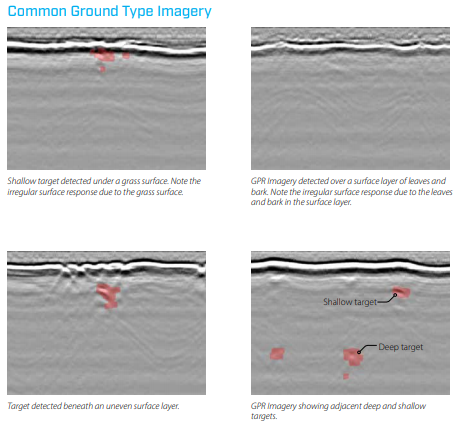
-
I'll make this easy on everyone and including myself.
My first 20 yrs was detecting old coins, civil war relics, gold jewelry on the beaches, Roman/Celtic in England and general use detecting before I became a dealer. I ran White's, Garrett, Bounty Hunters (BH were good in the days), Compass, Teknetics, and Fisher brands with many models of White's, Fisher and Garrett back in the 70's, 80's and early 90's.
In the mid 90's I started chasing gold nuggets and so this is where I'll start as it's easier to remember the last 25 yrs.
I have owned and found gold nuggets with at least 40 different models of detectors in the last 25 yrs. I could probably dig up photos of most, but it would take some time.
Interesting, we have more followers than I had expected that actually have been enjoying detectors for many years. Hats off to you for keeping the "gold fever", it's real.
-
What does a Veteran Detectorist think of all the gold detectors? I’ve been hooked and chasing gold nuggets for 25 years with a metal detector. I really don’t care who makes it or where it’s from, as long as the detector can find me more gold. I’ve used most all of the popular gold detectors manufactured and or sold in the US in that same 25 yrs.
I’ve watched metal detector manufactures grow, seen them make a few duds, helped a couple introduce some fine detectors to the industry and I hate to admit it, but have watched a couple big name manufactures close their doors. I think it might be fun to share my spin on the brand that seems to just keep getting bigger and stronger – Minelab. Yes there’s a few guys out there who have been using detectors longer than I and maybe they don’t agree with me. No worries, I’m not trying to outdo anyone or prove a point. I just want to share what I have experienced and if someone feels different and wants to take the time to do a write up, that’s even better. It adds to the discussion and conversation of what we here on DP love, detecting for gold.
Chuck had asked if Minelab had made a gold detector that was essentially not much of an improvement. Jason gave his input and history of Minelab detector and how he ranked them. I got to thinking, as a Minelab dealer for 20+ yrs and one who was even using their technologies and products in the field with success, before I became a dealer, I feel some more light could be shed and even going back before Jason was on board.
Minelab SD-2100. In 1996 I was blown away with the introduction of the SD-2100 and it's power (depth) over a VLF. Yes, it was a heavy detector but I was young and enjoyed digging deep holes. Definitely deserved a 5 star rating as this was the deepest detector I had ever got my hands on.
Minelab SD-2200d. The year 1998 a new version, the SD-2200d come along and the depth was on par with the 2100, but the 2200 had some discrimination, which worked ok. This detector did not knock me off my feet, but I did use the DISC in some areas of Oregon to get good gold in trash. I'd rate it a 3 Star.
Minelab GP-Extreme. 2000 was a good year and the introduction of the GP-Extreme with DVT (Dual Voltage Technology) allowed for greater improvements on smaller and finer gold than the SD's. Minelabs claim of nuggets 55% deeper than an SD-2200d (wonder why they did not say SD-2100?). I was pretty happy with their claim and my success…when I found an Extreme that ran properly as some of the early ones were noisy. I would give it a 4 star.
Minelab GP-3000. The issues of the GP-Extreme were cleaned up and an improved GP-3000 came out in 2003. Again, no big jump in depth, but cleaning up the internal noises allowed for cleaner smoother operation, clearer signal response and a few more nuggets. In my opinion the GP-3000 earned a 3 star.
Minelab GP-3500. Only 2 years later in 2005 and the GP-3500 was in my hands. Again, no big depth difference in any types of gold, but the Ground Tracking Button was added to the top of the hand grip. This change was nothing I wrote home about, but it was an improvement. I'd rate it a 3 star at the time.
Realize from the SD2100 (I never owned an SD-2000), up through and including the GP-3500, the coils, shafts and power supply were the same, so in reality it's hard to get a big increase in depths. The GP series with the DVT was better at smaller/rougher gold but depth on big gold was all pretty close and I felt in some cases the SD's could get a little better depth on solid nuggets. Today, finding a good clean SD-2100, SD-2200, GP-3000 or GP-3500 and it runs properly, at a decent price, would be a wise move for someone on a budget wanting to step up to a PI. That’s why I am willing to take some of the older units in trade, but the price has to be right.
Minelab GPX-4000. 2006 was the GPX-4000, yes a new series "GPX" and there was improved capabilities again on smaller gold, specimens and crystalline gold. New lighter battery, digital readout tuning and more timings. No claim of extra depth from Minelab but I felt the adding timings, and digital adjustments were in fact getting me a few more pieces of gold. I give the GPX-4000 a solid 4 rating of 5.
Minelab GPX-4500. In 2008 we were offered the very popular (even to this day), GPX-4500. I personally did not see a big difference in depths and or did Minelab make any claims of such. But it did have SETA (if I recall, a smoothing filter?) and added Timings, improved battery with built in Amp and a better waist belt, for what that’s worth. Even though this machine was not a wow factor for me, it did prove the test of time and to this day is a fantastic PI detector. In fact it was fazed out in the US and then later brought back at a better price point. At the 2nd better price point, certainly a 4 star, maybe 5, but at 1st when came out in 08, I rate it a 3 out of 5.
Minelab GPX-5000. Fall of 2010 we get the new improved GPX-5000 with 2 added Timings and some other fine tune adjustments. No big depth differences for most folks, but the 2 timings did have their merit and some folks to this day prefer a 5000 over a 4500. If I was looking at price differences today, I think the 4500 is a better deal at $2600 vs the $4000 price point we see for a GPX-5000 today. Realize the 5000 was priced $5800 and stayed there for a few years with great sales. I don’t recall Minelab stating any depth gains of the 5000 over the others, but I could be wrong? I did find more gold though as the Fine Gold Timing was good for certain kinds of gold. I would rate the GPX-5000 a 3 star.
Minelab GPX-4800. Came out about the same time as the GPX-5000 while they tried to faze out the GPX-4500. The 4800 in all fairness a relabeled 4500 in my opinion and it did not sell well, or last long. Still a good reliable detector though and event today finding a used one at the right price is a good move from a VLF. This was in my opinion, Minelabs 1st flop of a gold detector introduction. I rate it at a 1, but performance at a 3.
All 4 models of GPX detectors use the same power cords, battery (although the 4500,4800 and 5000 battery have built in amp), same headphones and shafts. Heck even the coils, shafts, headphones are all interchangeable with the SD and GP series as well, nice bonus for us all these years. An interesting spin on the GPX gold detectors, is they are now the most desired detector of the serious Relic Hunters back East. Those East Coast dealers are finally getting to make some money selling a multi thousand dollar unit that performs above all others at depth.
SDC-2300. Introduced in 2014, I felt this was a good breakthrough for Minelab and the gold nugget hunting community. Easily the coolest looking most compact gold detector Minelab has made to date, but heavy and awkward. Well we learned to deal with it, as it’s simplicity and performance for the majority of gold (small gold) was a big win. The 100% waterproof had a liking as well and I enjoyed a few nice water hunts with it on some black iron sand beaches with gold & diamond success. No it’s not a deep PI on big gold and Minelab never claimed it was, but boy did and still do, many people have fun and gold finds. I rate the simplicity/performance of the SDC-2300 a solid 5 star.
GPZ-7000. Early 2015, a Field Staff Expert and I took a prototype GPZ-7000 to Nevada to test the 40% more depth claims Minelab was touting. Another easy to see benefit of the GPZ was the simplicity when compared to a GPX and we liked it as we also realized most customers felt the GPX detectors were not easy to understand with the 250K variables of timings/sub timings/options/settings. The easier to set up and run 7000 was going to be easier to train and in fact we were worried it might be too easy and nobody would take the training. That eventually went away, as we realized most people still did not have an understanding of proper coil control, a good beep form a bad one and difference from ground noise and a real target. Did we find the 40% depth increase claim to be true? Well no measuring sticks were used, but I know for a fact the 7000 sees a variety of gold deeper than any other previous bigger PI detector I or any of my Field Staff have ever used. Our biggest complaint about the detector was the actual weight. In fact my 1st prototype did not even have the swing arm, which is almost a must for most folks. I rate the GPZ-7000 a solid 5 of 5 stars. I will say this though. Early on, I would have rated it a 4 as I had not spent enough time testing the settings and getting it dialed in like the settings I currently use. Today, I feel the performance of the GPZ-7000 is easily a 5 star.
GPX-6000. Introducing in late Spring or early Summer 2021 the most impressive of all GPX-6000. The claims of XXX depth over a variety of gold is impressive to say the least. The ergonomics and feel from my Staff that played with it seems to be a 5 star. The User Friendly cleaned up turn on and go (somewhat like a GM-1000) operation rates a 5 star. Now we just need to get it in our hands and in the field for some actual real prospecting. Then we can rate the stars on Performance vs what Minelab claims.
Again, I know some folks will have differing opinions than what I have mentioned. I also know their soils and detecting ground or overall detector knowledge will be different. I realize a few people have higher expectations than some of us and or not as fast to sell their old to try the new, technologies. But when I look back at my 25 yrs of using Minelab detectors, I find very little faults in their claims of depth increases. I’ve also found each new gold detector actually was an improvement over the other (minus the 4800) in some way or another. Do I justify each of us running out and purchasing the next new model? Heck no, I don’t know your income level or how high on the fun scale you rate detecting and digging up gold. But for me, I have found enough gold to pay for all my different Minelabs and I consider detecting to be my #1 passion.
In my eyes, Minelab has been the most consistent metal sensing detector manufacture in the last 25 yrs and will probably continue to do so. Each new unit they have come out with has produced more gold for my staff and I. We all expect this new GPX-6000 to do just what we want. That’s to find more gold, with a better ergonomically designed and user friendly detector. Will we find a particular nugget that one of our other detectors may hit at stronger, or a little deeper, or in a certain EMI or soil condition? Could happen, but I don’t worry about the rare anomaly occasion, I look at the overall variety of gold I pursue and chase. I’ll go out on a limb and rate the GPX-6000 a ---- shooting star.
Would love to hear your responses.
The video is some of my guys and I putting a spin on one of Minelabs 5 Star rated gold detectors.
-
14 hours ago, Gold Catcher said:
That' a matter of oppinion. The GM has found me good gold in shallow ground and IMHO the processor combined with iron meter makes it superior over the GB2 (which I also own), in particular when used in somewhat more difficult ground. True, the Nox 800 is probably a better joice, but I would not call the GM junk. It all depends on what else you've got in your fleet and how well it fits in. With the 5 in coil the GM makes a great bedrock scraper. 😁
I agree 100% Gold Catcher.
When I hear someone say a detector is junk, but only used for a month? I think the owner did not give it due justice. Typically, it is the operator who has issues, but I don't think so in his case. He likes the extra fine tune features the GB-2 and 24K possess, so he knows those detectors. Or maybe the unit was bad to begin with.
I too was not a big fan of the Monster at 1st, but it grew on me the more I used it and I starting seeing its finer points in some situations. My issue at first coming from VLF detectors than needed adjusted all the time. Now I realize, like most folks, the Gold Monster 1000 is a fine tool for most applications. And as others have mentioned, it is truly one of the best detectors to hand to a friend, family or buddy who does not hunt as often, since it's so User Friendly.
GM-1000 is the #1 selling VLF gold detector in the US, so I'm certain "junk" does not get mentioned often when compared to the amount of Success it provides the majority.
Heck, I'm a NOX fan myself when it comes to VLF gold detectors, but will admit, the biggest piece of gold I found in 2020 was with a customers Gold Monster 1000. Boy it's a hard pill to swallow when you hand over a 10+ ozt specimen with over $5000+ you just dug with someone else's detector. But I got to find it, so that's what counts most.
-
1 hour ago, strick said:
Jeez Gerry...thats all i have to say...🙂
strick
But my friend...you have at least 1 gold and diamond grill, maybe 2? I have yet to to wear one.
-
One of my customers in AZ forwarded this pic to me. Looks to be the end of the box from a GPX-6000.
Interesting to read what Geo Sensing Technology is. I realize this does not go into detail, but it's a start.
I'm quite impressed with the about statements
- detect in different environments once thought undetectable.
- suppresses unwanted signals via 3 overlapping feedback systems.
- super fast detecting of all gold pieces.
- GPX-6000 is in tune with you and the earth
Best for last- ALL GOLD, ALL SOILS, ALL THE TIME.
Your thoughts please?
PS. Thanks Ray for sharing the pic.
If you are thinking about the GPX-6000, www.gerrysdetectors.com has been been around selling/using Minelabs for 20+ yrs.



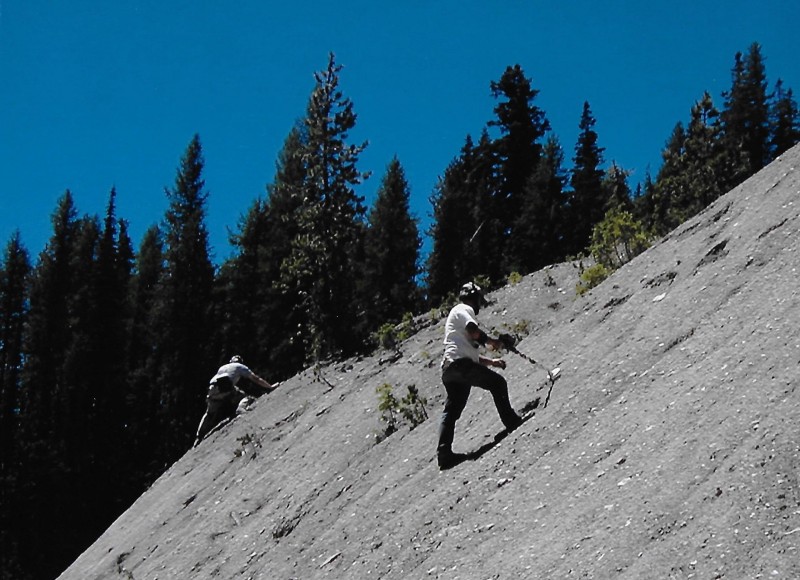
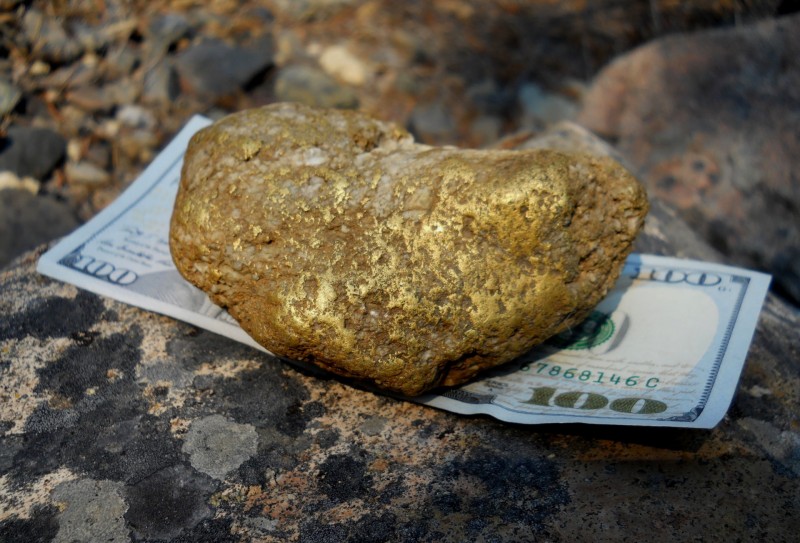
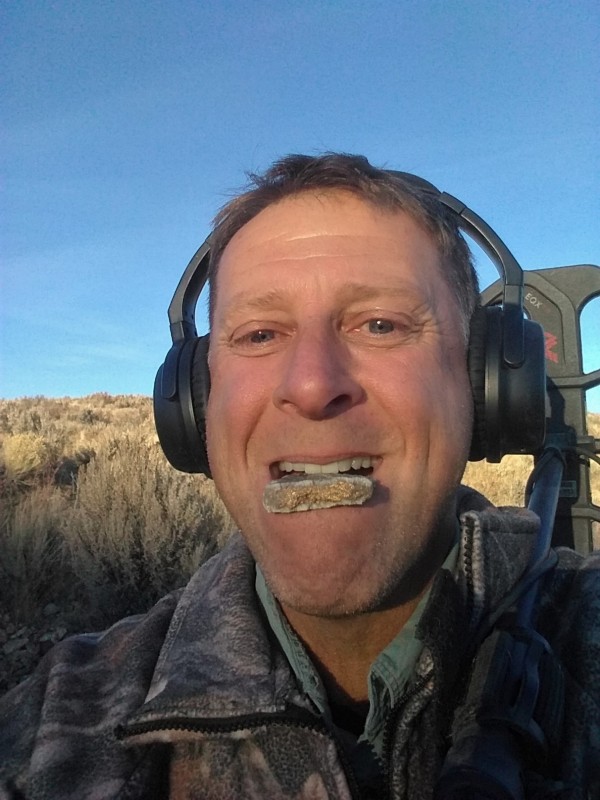
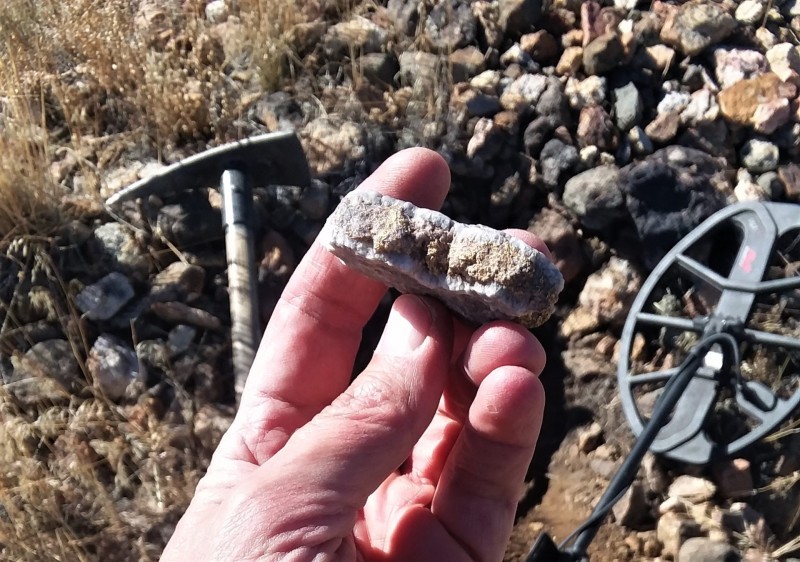
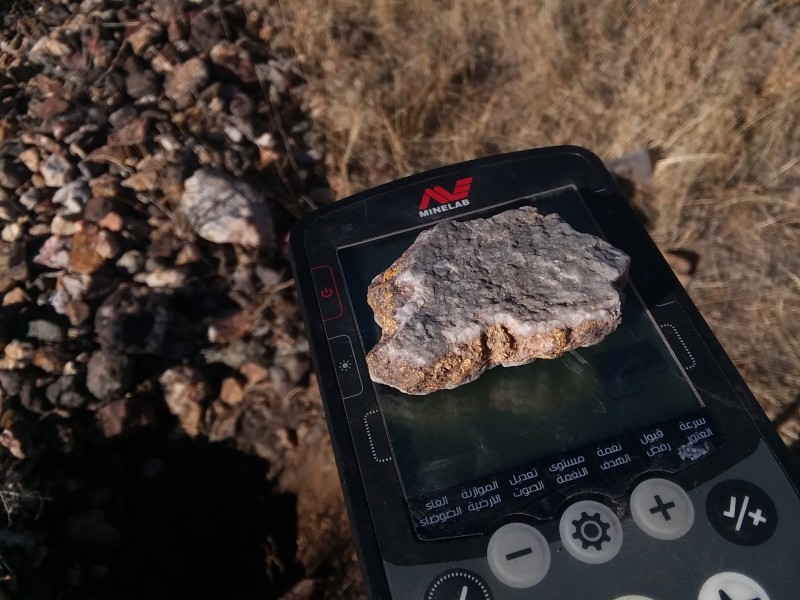
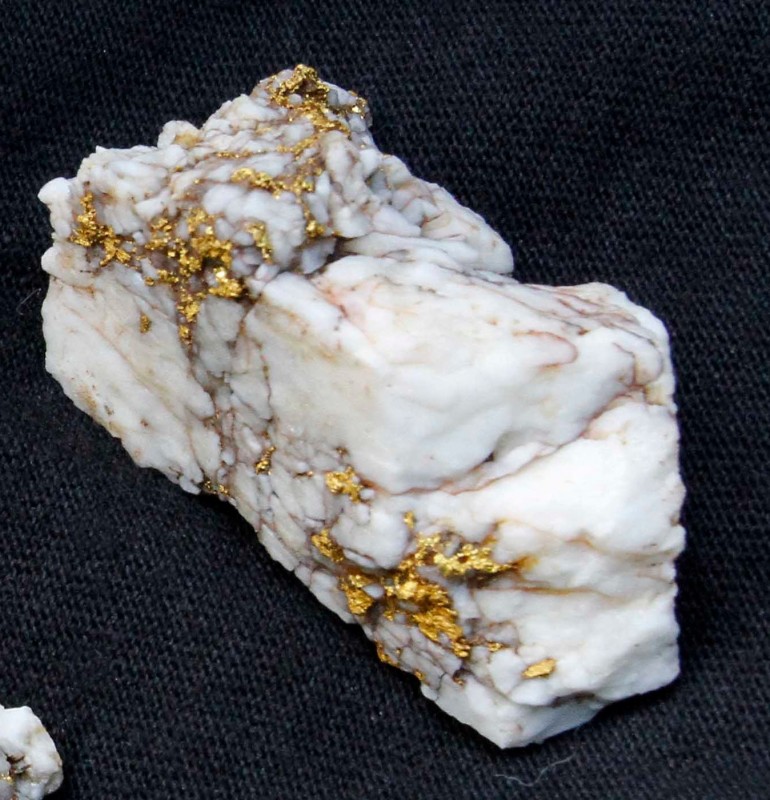
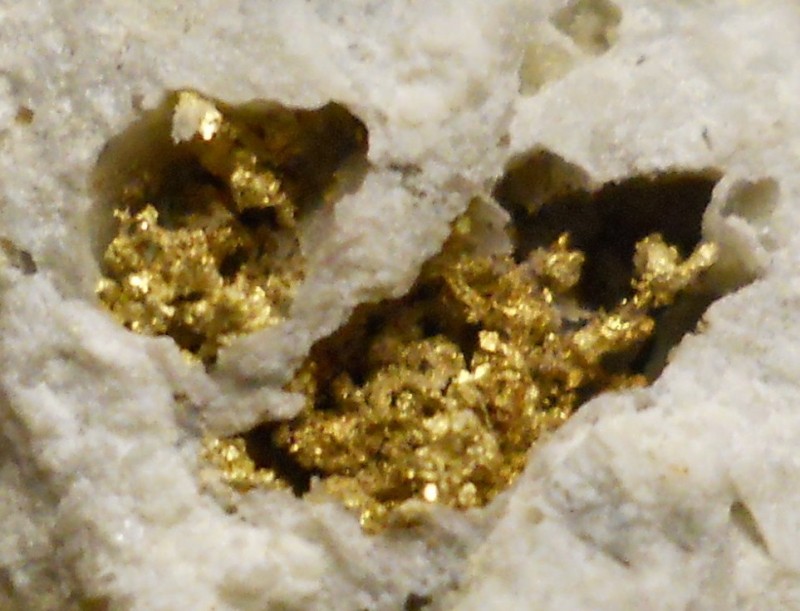
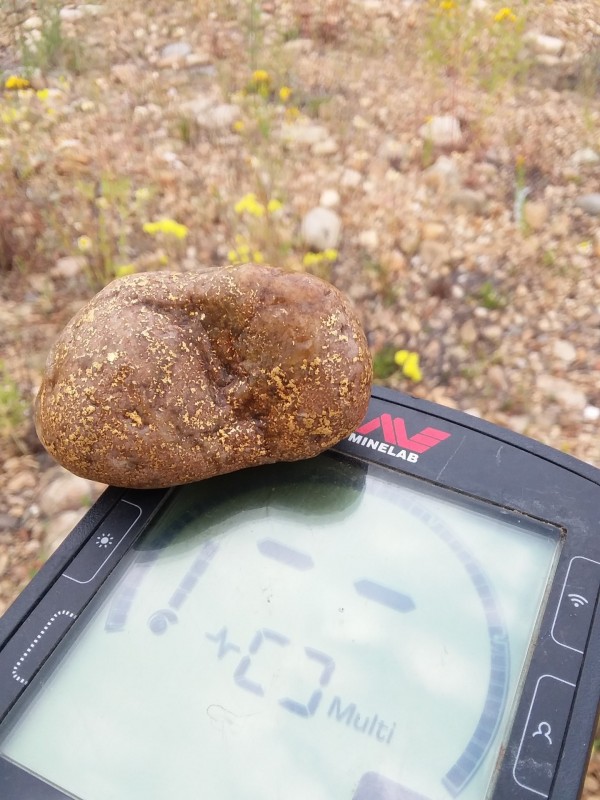
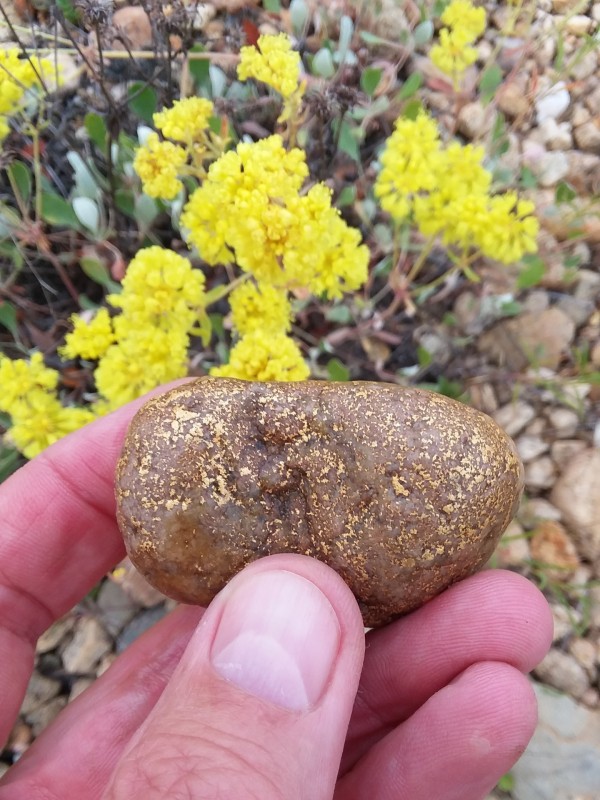
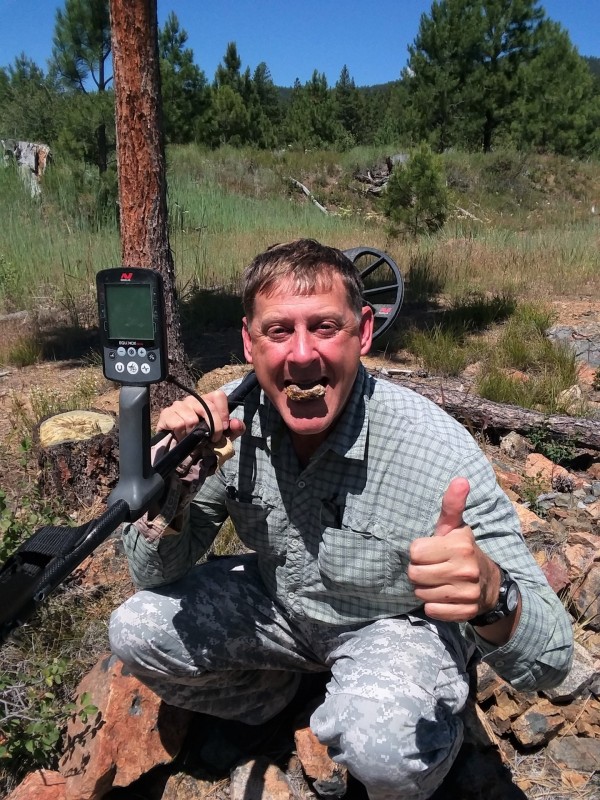
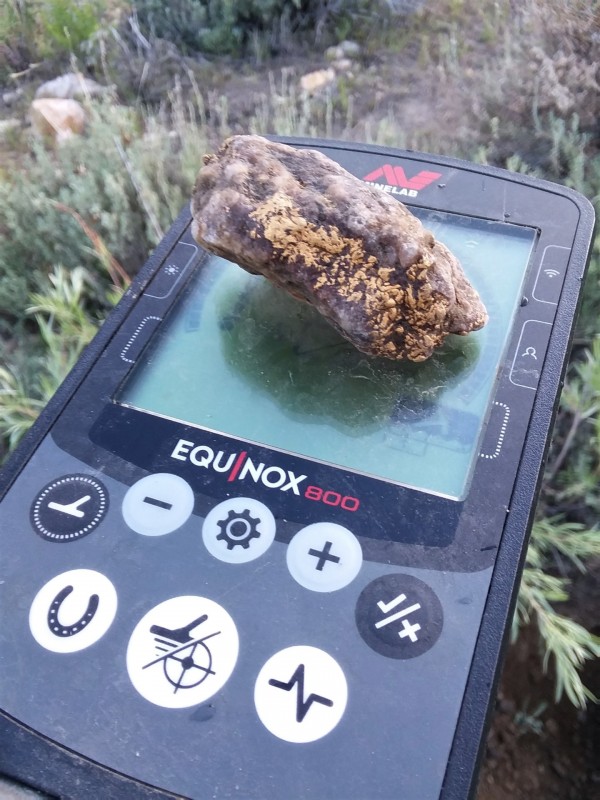
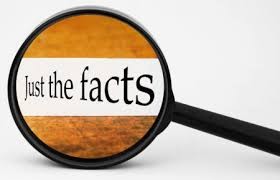
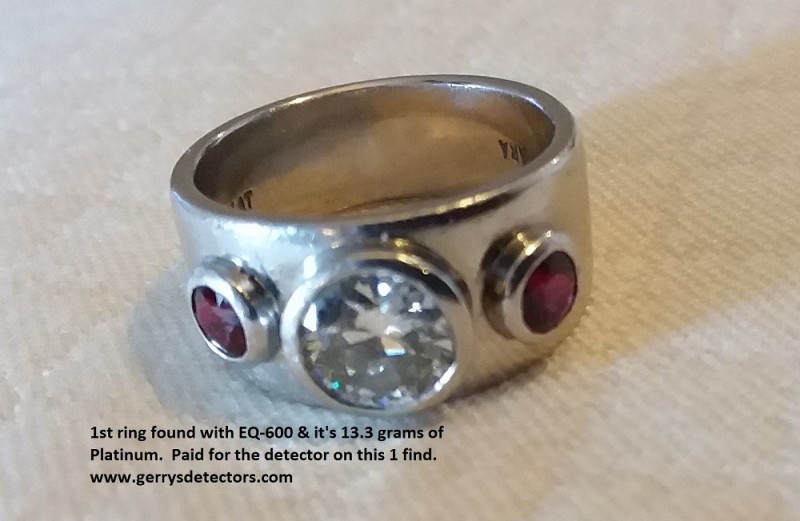
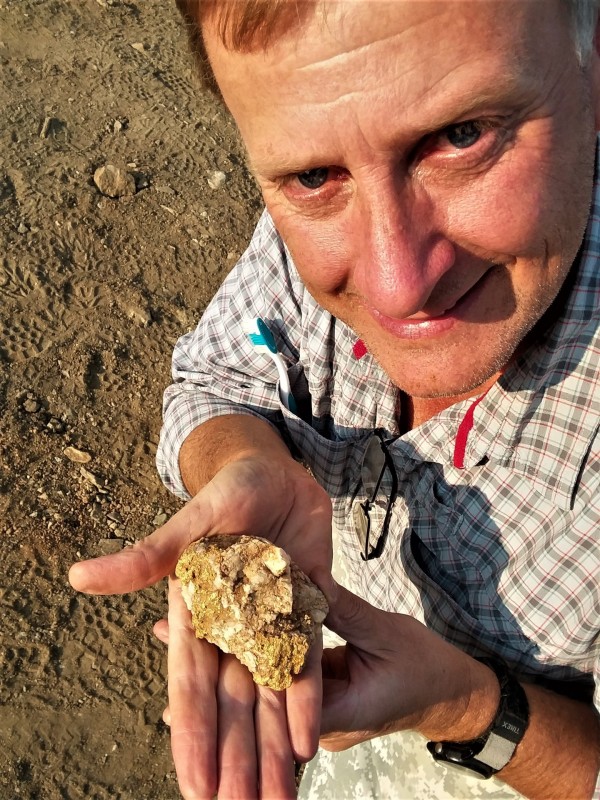
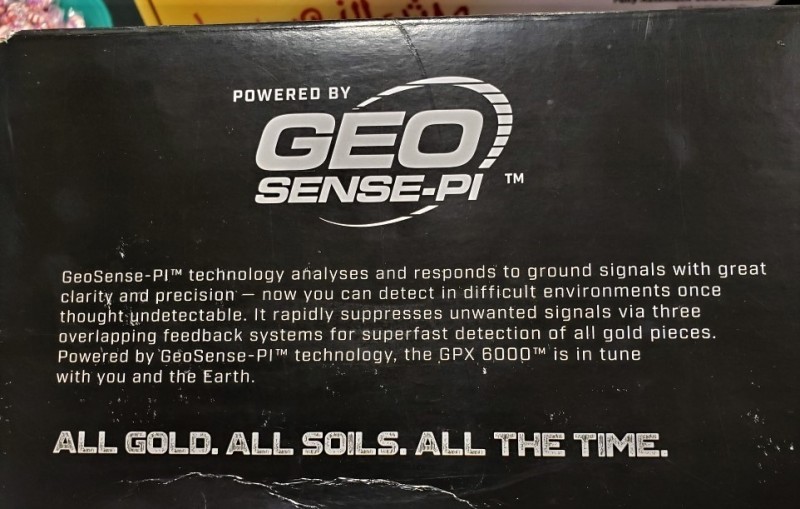
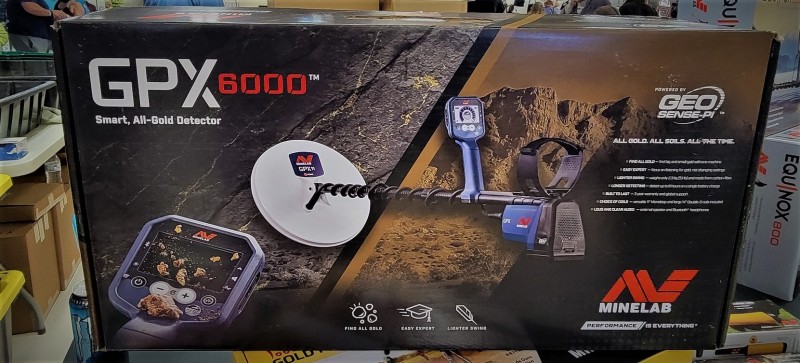
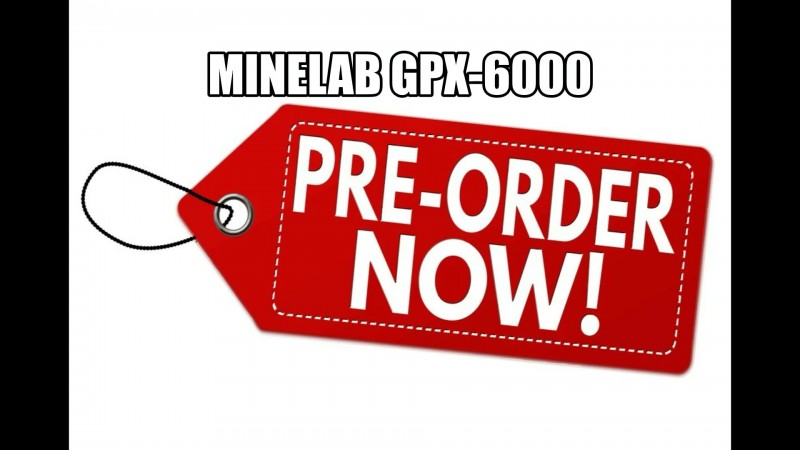
The Weight Of This Gold Had Us Stumped, We Were Sure A 2+ Oz'er
in Detector Prospector Forum
Posted
Can you shed some light from past experiences?